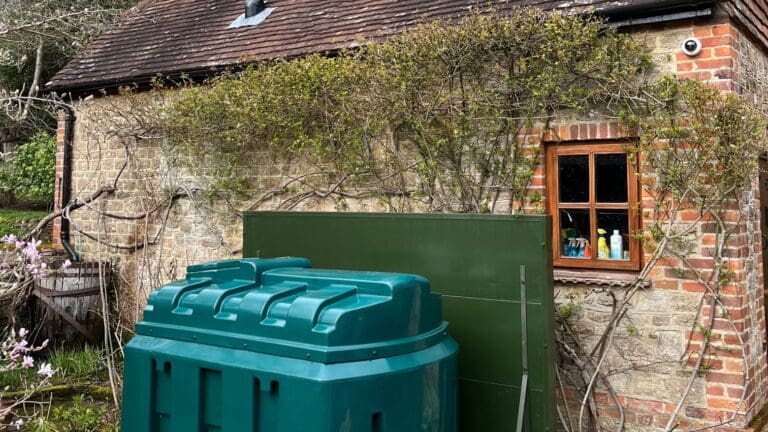
Thousands of households and businesses rely on oil-based heating systems. However, the convenience and efficiency of such systems come with a necessary caution: the risk of fire.
While rare, the consequences of a fire involving an oil tank can be severe, posing a threat not only to property but also to lives… and this is why regulations are tight concerning where oil tanks can be sited.
Of course, different restrictions apply to siting tanks near buildings and boundaries, but the constraints can mean that choosing the right location without compromising on outdoor space or aesthetics, is tricky for your customers.
Fire protection
To help to solve this problem, the industry developed fire protection barriers for oil tanks. When installed correctly, they provide an efficient and economical way to comply with regulations, improve the appearance of the tank location and, of course, keep property and people safe.
Insulated fire protection barriers act to mitigate the potential damage that can arise in the unfortunate event of a fire. They act as a shield, creating a protective zone around the oil tank and slowing down any fire that ignites. They come in a kit form, so can usually be erected quickly with minimal tools.
Rob Butler from Barton Oil Burner Services Ltd had this to say: “We decided to use fire protection barriers a couple of years ago. Although we weren’t sure if installing the panels would be easy or effective before we started, we quickly found it was!
Easy installation
“The barriers are supplied in various sizes in a kit that has everything you need for the installation, making it easy to do with just a few tools. In fact, it’s very simple: you just fix or lay a guide rail on the floor and clip the barrier sections in.
“The panel sections are 500mm high and come in different lengths to suit any tank size and project needs. The panels are made of an insulating material with a metal covering. They’re very easy to cut and light to handle. Once you’ve got them up, you add the end panels, fit the top section and add the corners. The whole thing is fixed together with self-tapping 8 mm-headed bolts. The panels are finished in green, and the kit even had green caps for the bolts, so the final results look very professional and neat.
“If your project demands that your fire protection be free-standing rather than attached to another structure, such as a wall, you can get angled brackets that fix to the floor and fully support the panels. They’re about 100mm thick, so you need to accommodate this when you’re making your concrete base.
“The kit was packaged really well. The sheets came fully protected with a film covering that you pull off during installation.
“All in all, we are really impressed with how quickly we can erect fire protection barriers for our customers. You can put a 2.5 x 2.0m wall up, from start to finish, in 1/2 hour.”
Popular products
Atlantis Tanks’ fire protection barriers are one of the company’s most popular products. The company’s sales director, Kieran Mytton, explained: “We’ve seen sales of our fire protection barrier kits increase a lot over recent years. We put that rise down to the kits being simple to use and quick to erect. Installing these barriers also means that you’ve got lots more choice about where to put an oil tank… and it’s going to look better, wherever it’s located. To help our customers calculate the right size of kit for a project, we now have a kit size calculator tool on the website, which makes the job even easier.”
In a world where safety matters most, fire protection barriers help your customers to keep warm without compromise.
